



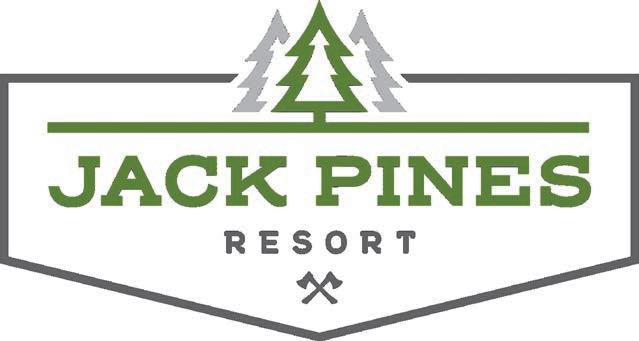






AUGUST
17: Noon Hour Concert, Riverside United Methodist Church
17: 2nd Street Stage
18: Festival of Tables, CHI St. Joseph’s Health Auxiliary
18-20: Lake Itasca Pioneer Farmer Show
19-20: Art Fair at the Winery, Forestedge
Winery, Laporte
24: Noon Hour Concert, Calvary Lutheran Church
26: Veterans Tribute Program, Howard Maninga’s home, Ponsford
28: Historical Society program on Itasca, Northwoods Bank
31: Noon Hour Concert, Calvary Lutheran Church
SEPTEMBER
13: Historical Society feat. Jean Cooney, Hubbard County Museum
23: Headwaters 100
23-24: Art Leap 2022
OCTOBER
30: Historical Society feat. Will Weaver, Northwoods Bank
31: Trick or Treat Park Rapids
NOVEMBER
24: Community Tree Lighting and Yuletide Sampler
The Heartland Lakes area teems with the sights and sounds of the great Minnesota northwoods.
Enjoy our towns and its people while surrounded by pristine lakes and tall pine forests.
This region offers a variety of opportunities – from scenic retreats and outdoor sports to rich cultural experiences, shopping, dining and entertainment.
Jump into the water for swimming, tubing, water skiing or fishing.
Bike the famous Heartland Trail for a day of historic sights and healthy recreation. Explore the scenic North Country Trail.
Play a game of disc golf, tennis or softball or have a picnic at one of the city or county parks. Golfers needn’t go far to find top-rated courses within a short drive in any direction.
With more than 400 lakes, thousands of miles of trails and a wildlife refuge, the Heartland Lakes area is also a gateway to Itasca State Park, home of the Mississippi River headwaters.

Local art galleries and museums celebrate the history and artistic talent of our communities.
Park Rapids & surrounding towns host many summer festivals with parades, music, kids games and more.
From life on the lakes to exercise on the trails, shopping the unique stores or just kicking back with a good book beneath the Norway pines, the Heartland Lakes area offers it all.
Flip through this issue of Summer Scene and you’ll find what you are looking for in lake and pine country. We just know that you’ll enjoy your stay.
Note: Events are subject to change. Always check with the organizer before making plans. All events listed are in Park Rapids unless otherwise noted.





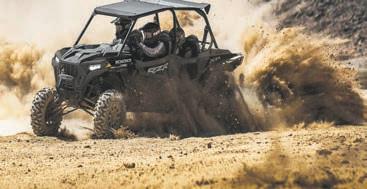















1. Explore the pioneering past
Go back in time and spend a day or two exploring what life was like in the area in the “good ol’ days” at the Lake Itasca Region Pioneer Farmers Show, Friday through Sunday Aug. 18-20.

The showgrounds, located off Hwy. 200 at the north entrance to Itasca State Park, are a rustic village featuring a country school, church, shops, post office, pioneer homes and more. Gates open at 7 a.m. daily.
Forestedge Winery, renowned for transforming native northwoods’ fruits and berries into internationally awardwinning wines, hosts its annual art fair on the third weekend of August.


This year’s dates are Saturday, Aug. 19 and Sunday, Aug. 20.
Admission and parking is free. The event features selected artists exhibiting and selling their works.
Artistic mediums include pottery, porcelain, jewelry, fiber, leather, wood, painting and more.
Art Leap, an open studio driving tour, will offer 30 sites and feature nearly 100 artists.
The event will be held Saturday and Sunday, Sept. 23 and 24. Studios will be open from 10 a.m. to 5 p.m. Saturday and 11 a.m. to 5 p.m. Sunday.
Hop from studio to studio, learn process, appreciate skill and support the artists. Let fall’s natural beauty as you pass lakes and travel country roads inspire you as it does the artists. Learn more on page 30.
The Headwaters 100 Bike Ride takes place on Saturday, Sept. 23. The casual, family-friendly ride offers 45-, 75- or 100-mile routes through the lakes area.
The Headwaters 100 is the premier
event of the Itascatur Outdoor Activity Club. Every year, hundreds of cyclists from all over North America head to Park Rapids to tour the spectacular fall colors.
Register at www.bikereg.org/ headwaters100.
The ride begins at 9 a.m. and the route includes riding through Itasca State Park and other areas of the northwoods where fall colors are usually nearing their peak.
The Park Rapids area and its abundance of lakes provide ample opportunity for the fishing enthusiast.
Whether you’re looking for fish simply for fun and the relaxation of dropping a line or wanting to take part in a competitive tournament, you’re sure to find what you want in Hubbard County.
Whether you catch off the dock, from shore or pull fish into a boat, it’s
all about creating memories in lakes and pines area. Summer fishing can be as simple as hanging out on the dock and snapping a photo with a big catch. Fishing is a family sport – for the youngster with his or her first rod and reel, the avid angler or an entire family on vacation visiting one of the many lakes and resorts.

Check in at one of the local bait shops for tips on hot spots, best bait and lures, fishing style and time of day for whichever lake you’re heading out to fish.
Bring a lawn chair to Main Street, downtown Park Rapids and enjoy free, outdoor concerts from 6 to 8 p.m. on Thursdays through Aug. 17.
The Park Rapids Downtown Business Association hosts the live concerts, featuring regional bands, a beer garden and family activities.

If you haven’t done it already this summer, now’s the time – light up that backyard fire pit, take a seat, pop open a cold beverage and roast some marshmallows with your family, friends and neighbors. Or roam away from home and enjoy the sight, sound and smell of a campfire. There are plenty of state forests and resort campgrounds – plus Itasca State Park – where you can pitch a tent and get a campfire going.
Turn a rainy day into a visit to the Nemeth Art Center. It shares space with the Hubbard County Historical Museum in a beautiful Victorian building that was originally built as a courthouse. Visit nemethartcenter.org or hubbardcountymuseum.org for the latest hours and exhibits.
Hubbard County is an ATV enthusiast’s playground. There are miles of ATV and OHV trails around.
The Martineau Recreational Trails are found in the Paul Bunyan State Forest, near Akeley. Located on a combination of state forest roads and trails in northern Minnesota, the Round River Drive Trail showcases the diverse terrain of the Paul Bunyan State Forest.
The Forest Riders Trail in the Smoky Hills and Two Inlets State Forest is a 100-mile, scenic ride through Becker and Hubbard counties, on terrain ranging from rolling and hilly to level and smooth.

Sculptures created by Minnesota artists dot downtown Park Rapids and Red Bridge Park. Stroll along the trail to enjoy a dozen new sculptures. All artworks remain in place for a year and are available for sale.

Scenic beauty rewards active lifestyles during the Headwaters 100, held on Saturday, Sept. 23, beginning and ending at Century School in Park Rapids.
The ride is hosted by the Itascatur Outdoor Activity Club and includes well-marked 100-, 75-, and 45-mile routes through northern woods in their full autumn glory.

The 100-mile route leads through the beautiful lakes area to Itasca State Park. After a short hike to the headwaters of the Mississippi, the ride follows Wilderness Drive through the park, proceeds through Dorset, Nevis, Emmaville, Lake George and takes the Heartland Trail back to Century School.

The 75-mile route goes through Itasca State Park on Wilderness Drive and Lake George, Emmaville and Dorset before following the Heartland Trail back.
The 45-mile route passes through Emmaville, Nevis and Dorset.
Refreshments are included in the registration, with food and beverage stops along the course. T-shirts are included for early registrants.


For rules, routes, frequently-asked questions and online registration, visit www.itascutur.org. Register for the ride here: https://www.bikereg.com/headwaters100.













The Heartland Lakes area is a prime example that the popularity of people playing pickleball is projecting in a positive direction.

Court time is at a premium during the summer months at the six courts at Heartland Park. Those courts were converted from two tennis courts in Sept. 2019. Hubbard County Parks and Recreation built and maintains the new courts.
Since then, the sport has prospered in the area with 135 members now comprising the Park Rapids Pickleball Club. That’s up from 60 members two years ago, including 36 new members this summer.
That’s a trend across the U.S. According to the Association of Pickleball Professionals, an estimated 36.5 million people are playing pickleball. That’s up from 4.8 million in 2021.
There are plenty of reasons for the popularity of the sport (which is a
combination of tennis, badminton and ping pong played on a badminton-size court with a slightly modified tennis net). Players say the sport is easy to pick up, no matter your age or skill level. You can play singles or doubles and it is relatively inexpensive with a quality paddle costing between $100 and $200.
“You can go anywhere in the country and just show up and play. I like the social part. I’ve made so many friends through pickleball. The camaraderie
PICKLEBALL: Page 12







Now under new ownership, The Red Barn is your one-stop-shop for local, handmade goods with heart. Featuring arts, gifts, and wares from makers, crafters, and creators throughout the Midwest, you’re sure to find something to love. And keep an eye out for fresh, local produce throughout the summer.





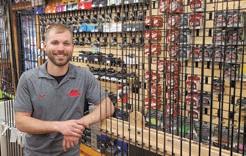
From Page 10
is so appealing,” said Lori Vatnsdal, the treasurer of the PRPC. “It’s good exercise. You don’t realize you’re working out. It’s a big tourist draw. I’d say 1/3 of the people here (at the Heartland Park courts) are tourists.”
There are numerous physical and psychological benefits to playing pickleball. Pickleball provides a healthy
workout for players of all ages. Since the court is smaller than a tennis court, players will still burn calories while experiencing fewer injuries since it’s a low-impact sport that will improve balance, agility and hand-eye coordination.
Pickleball is a social sport that can boost your mood and reduce symptoms of anxiety and depression, according to a study published in the Journal of Positive Psychology. The study found that people who participated in sports are more likely to have a positive
outlook on both aging and their overall lives. The social aspect of pickleball allows players to create friendships and provides incentive to stay physically active.

People interested in picking up the sport of pickleball can stop by the courts Tuesday through Friday mornings to play or go to the Park Rapids Pickleball Club web page (prpickleballclub.com) for more information. Lessons are also offered.
PICKLEBALL: Page 14
“It’s a fun sport. I’m addicted to it.”
LORI VATNSDA














From Page 12
While summer provides the perfect conditions for outdoor play, the ARCC gym in Akeley as well as Nevis Community Education and Menahga Community Education also have pickleball during the fall and winter months.

The Osage Lions Club is starting a
pickleball project as well. They plan to convert one of their ballfield diamonds into a court.
“I’ve been playing for three years,” said Nerissa Marzolf. “I enjoy the competition.”
“I was introduced to it four years ago. I play mostly for the exercise and the competition,” said Dave Schmitz of Park Rapids. “It’s easy to play and you can play every day. It’s a fun sport.”
“This is my fourth year playing. I used to play tennis and I saw some people
playing pickleball and was curious about it. It looked really fun and I decided to give it a try. I haven’t played tennis since,” said Vatnsdal. “It’s a fun sport. I’m addicted to it.”
“We have a really good pickleball club here,” said Ken Osterberg. “The courts get used a lot and are always busy. It’s great exercise. My wife never played sports, but this is a sport we can play together. It’s a lot of fun.”
Vance Carlson can be reached at vcarlson@parkrapidsenterprise.com
► American dog and deer ticks are just two of 13 known tick species in Minnesota. Deer ticks are potential carriers of Lyme disease, human anaplasmosis and babesiosis.

► Ticks are blood-sucking members of the arachnid family.
► American dog ticks feed on a wide variety of mammals, including mice, voles, chipmunks, raccoons, squirrels, dogs, cats and people.
► Male American dog ticks feed
briefly but do not become distended with blood. Once replete, female dog ticks detach from their host and drop into a leaf litter, where they can lay over 4,000 eggs before dying.
► Deer ticks, also known as blacklegged ticks, live about two years. Adult females are the size of a sesame seed.


► Lyme disease is named for Lyme, Conn., where scientists first discovered the tickborne infection in 1975.



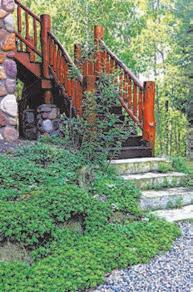

► Use tweezers to grasp an attached


tick close to its mouth. Gently and slowly pull.
► The tick straight outward. Wash the area and apply an antiseptic to the bite. Ticks must remain attached for one to two days to transmit Lyme disease bacteria.
► When hiking in wooded areas, wear light-colored clothing so ticks will be more visible. Use a repellent containing DEET or permethrin. After being outdoors, get out of your clothes immediately and do a complete body check.
A hidden gem meanders through lake and pine country.
It’s called the North Country National Scenic Trail (NCT).
It’s one of 11 national scenic trails in the U.S. and the only one in Minnesota.
NCT is a footpath stretching over 4,800 miles – from central Vermont to central North Dakota.
Being open to foot traffic only, Minnesota’s trail holds unimpeded travel for hikers, berry pickers, mushroom hunters, geocachers, cross-country skiers and snowshoers.
Short day hikes or overnight hikes are possible. Maps, events and suggested hikes are available at www.northcountrytrail.org.
Anyone walking this trail is in for a treat as it meanders through forested hills and valleys interspersed with rivers, lakes and numerous wetlands.
At most locations, there is a kiosk or signboard with information about the trail. Hiking distances to the nearest kiosk are also provided.
A “Guide to Hiking the North Country Trail in Minnesota” guidebook is available in bookstores in Park Rapids, Itasca State Park, Tamarac National Wildlife Refuge and online.


The NCT is administered by the National Parks Service, managed by federal, state and local agencies, and built and maintained primarily by the volunteers of the North Country Trail Association (NCTA) and its partners.
Do you enjoy hiking and are you looking for a group to hike with on a regular basis?
Join these area NCTA hiking groups: Laurentian Lakes or Itasca Moraine.
The area’s segments of the North Country Trail are maintained by these two chapters.
The Laurentian Lakes Chapter maintains over 60 miles of the NCT
through Becker and Clearwater counties, using only volunteers and donations..

The Itasca Moraine Chapter maintains 75 miles of the trail in Hubbard and Cass counties.

Since formation in the spring of 2002, the chapter has been engaged in extending the NCT from the west boundary of the Chippewa National Forest through the Paul Bunyan State Forest and Hubbard County’s taxforfeited forestlands toward Itasca State Park.
Eric Haugland, a member of Itasca Moraine chapter, says, “Hiking along an undeveloped forest lake allows you to experience wildlife with little human activity, and see lady’s slippers, wild rice and other flora in a natural setting.”
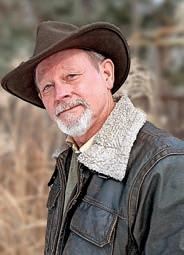
Later in the summer, Haugland said hikers are rewarded by finding wild strawberries, raspberries and blueberries along the trail.
Small wild plums are a late seasonal fruit found on the trail in high, dry areas.
Mushrooms and fruits can be picked along the trail and within the state park for non-commercial and personal use.
One of Haugland’s favorite hikes is Upper Teepee Lake when a sole birch forest turns yellow.
“Beavers, otters, nesting loons and trumpeter swans are found in and on the lakes,” he said.


Matthew Davis, regional director of the NCT, said, “We’re always looking for additional volunteers to help us do routine maintenance in addition to responding to these natural disturbances.”
According to Davis, folks interested in hiking can find more information about the NCT here:
► NCTA’s interactive map for the area is at https://arcg.is/1SGf050.
► NCTA’s free hiking map downloads are at https://northcountrytrail.org/ maps/mn_map_series_020_052_ northcentral_mn.pdf (to print out) or https://www.avenzamaps.com/ maps/850596 (to download to your smartphone).
► NCTA’s Guide to Hiking the North Country Trail in Minnesota can be purchased here: https://shop. northcountrytrail.org/collections/ books/products/guide-to-hiking-thenorth-country-trail-in-minnesota.








Many people who fish, probably most anglers, dream of someday catching a true trophy-sized fish. Often, folks believe that big fish are the result of luck. I will admit that luck does play a part in fishing successes at times. However, there are things that we, as anglers, can do to tilt the odds of landing a trophy in our favor. Here is a look at some of those things.
The first tip I would offer an angler trying to catch a big fish is to fish in waters where big fish live. Simply put, some lakes, rivers, and reservoirs produce big fish frequently, or at least more regularly than most other waters. If you can fish one of those waters, your odds of landing a big fish go up just by choosing that particular water. Finding waters that produce big fish is pretty easy in today’s world, where we can do a computer search to find out just about anything we want to know, including where big fish live.
Going to what I call “big fish water” is a good start. The next step becomes


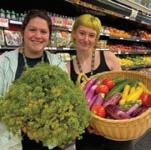


hitting that destination at the best time. Often, early summer, after the fish are fully recovered from the spawn, is a time when the big females in a fish population go on the feed to replenish the weight lost during the spawn. This might be a good time to catch a big female, but she might weigh less than later in the year because her body weight is somewhat depleted by the rigors of the spawn. A better time to target a trophy might be during fall when fish of most species are feeding heavily and adding weight as they prepare for winter. In fact, for me personally, I have caught many of my biggest fish during late September and October. Here is where the internet can be your friend again as various websites logging big fish catches often have the date when a trophy was caught included. If for example, many big fish from a lake came in September, that would probably be a good time to plan your fishing vacation to that lake. Going where the big ones live and going there at the right times are important. Another thing to consider
is bait choice, particularly the size of that bait. “Big baits catch big fish” is a mantra that often holds true. For that reason, when targeting a big walleye, for example, I often choose a big redtail chub or creek chub of at least 6 inches in length. When a big bass is being targeted, I like a big jig, like a ¾- or even one-ounce Hack Attack jig, and tip it with a sizeable plastic trailer like a Rage Craw. Big minnows and big jigs might not garner as many bites, but the odds for a big bite go up most days by using big baits.
Big baits and big fish often go hand in hand. If your goal this fishing season is a trophy fish, utilizing some of the suggestions just offered should increase your chances for success. Good luck in your hunt for a big gun and, as always, remember to include a youngster in your next outdoors adventure.


Mike Frisch hosts the popular Fishing the Midwest TV series on the Sportsman Channel and several other networks as well. Visit www.fishingthemidwest.com to see all things Fishing the Midwest.
Area: 2,531acres
Littoralarea: 986acres

Shoreline: 11 miles

Meandepth: 25feet
Maximumdepth: 65feet LakePlantagenetissplitbetween RockwoodandHelgatownshipsinnorthern HubbardCounty,withitsnorthernend extendingintoBeltramiCounty.

Thelakehas apavedboatlaunchonits southeastcorner,anon-pavedlaunchnearits northeastoutlet,and arustic,carry-inlaunch forcanoesandkayaksatitssouthwestinlet.
TheSchoolcraftRivercrossesLake Plantagenetfromsouthtonorth,namedafter AmericanexplorerHenryRoweSchoolcraft (1793-1864),whoorganizedtheexpedition tofindtheMississippiheadwaters.Ledby OjibweguideOzawindib,thepartypaddled throughLakePlantagenetontheirwayto Itasca.
Thename“Plantagenet”honorsthelineof kingswhoruledEnglandfrom 1154to1399, startingwithHenryII.AccordingtotheLPLA, thelakewaspreviouslycalledKubba-Kunna, whileMNopediasaystheOjibwenamefor thelakeisOzaawindibe-zaaga’igan(“YellowheadLake”),honoringOzawindib.
In1895,JacobBrowertraveleddownthe SchoolcraftRiver,recordingsignsofan IndianvillageatLakePlantagenet’soutlet. AccordingtotheLPLA,theareawaslogged inthelate1800s,withtimberfloateddown thelakeand aloggingcamptothenorth. Some logs from that period still lie at the bottomofthelake.

Thelakeishometo awidevarietyoffish species,includingvarietiesofbullhead, crappie,sunfish,bass,muskellunge,northern pike,walleyeandmore.
TheLakePlantagenetLandowners’ Association(LPLA)wasstartedin2001when concernedlandownerssuccessfullyopposed astatelawallowingtimberharvestingfrom thelake.Thelakeassociationcontinuestobe activeinprotectingthelake’swaterquality. InJune2023,theMinnesotaDepartmentof NaturalResourcesconfirmedthepresenceof zebramusselsinthreeareasofthelake.
Informationprovided by theLakePlantagenetLandowners’Association(www.lakeplantagenet.org)and theMinnesotaDepartmentofNaturalResources.
Minnesota’s oldest state park is 132 years old.
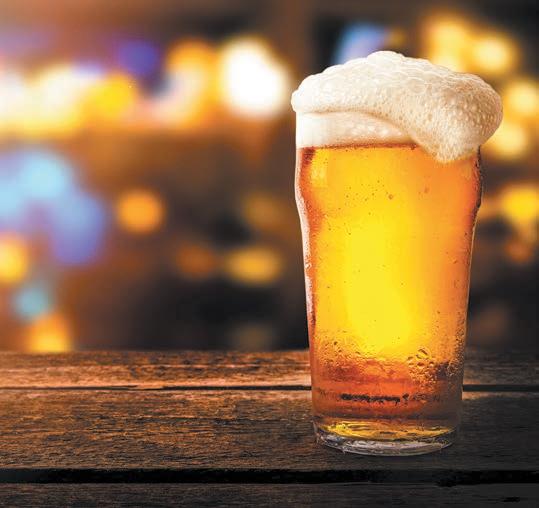
Itasca State Park was established on April 20, 1891 to preserve the old growth pine trees that were in danger of being logged.
More than half a million people visit Itasca State Park every year to see

the giant pines and wade across the headwaters of the Mississippi River State Water Trail.
Park Rapids is the undisputed Gateway to Itasca State Park and the south entrance is a 22-mile drive from Park Rapids north on Hwy. 71. The east entrance is only a couple miles farther
north of the south entrance, and then another mile or so west on Hwy. 200 – you’ll find it easily at the junction of Hwy. 71 and Hwy. 200.
On the drive north from Park Rapids on Hwy. 71 visitors can find several




From Page 21
quaint shops and recreation areas to stop at along the way. Also, some fabulous restaurants are located just off of Hwy. 71 that are sure to satisfy any appetite.
Itasca State Park encompasses Lake Itasca, the official source of the Mississippi River, and a scenic area of northern Minnesota that has remained relatively unchanged from its natural state.
Today, the park totals more than
32,000 acres and includes more than 100 lakes. Stand under towering pines at Preacher’s Grove. Visit the Itasca Indian Cemetery or Wegmann’s Cabin, landmarks of centuries gone by. Camp under the stars, or stay the night at the historic Douglas Lodge or cabins. Explore Wilderness Drive past the 2,000-acre Wilderness Sanctuary, one of Minnesota’s seven National Natural Landmarks.
But the main attraction will continue to be walking across the headwaters of the Mississippi River on stones at the mouth of Lake Itasca. But there are plenty of other activities to do at the
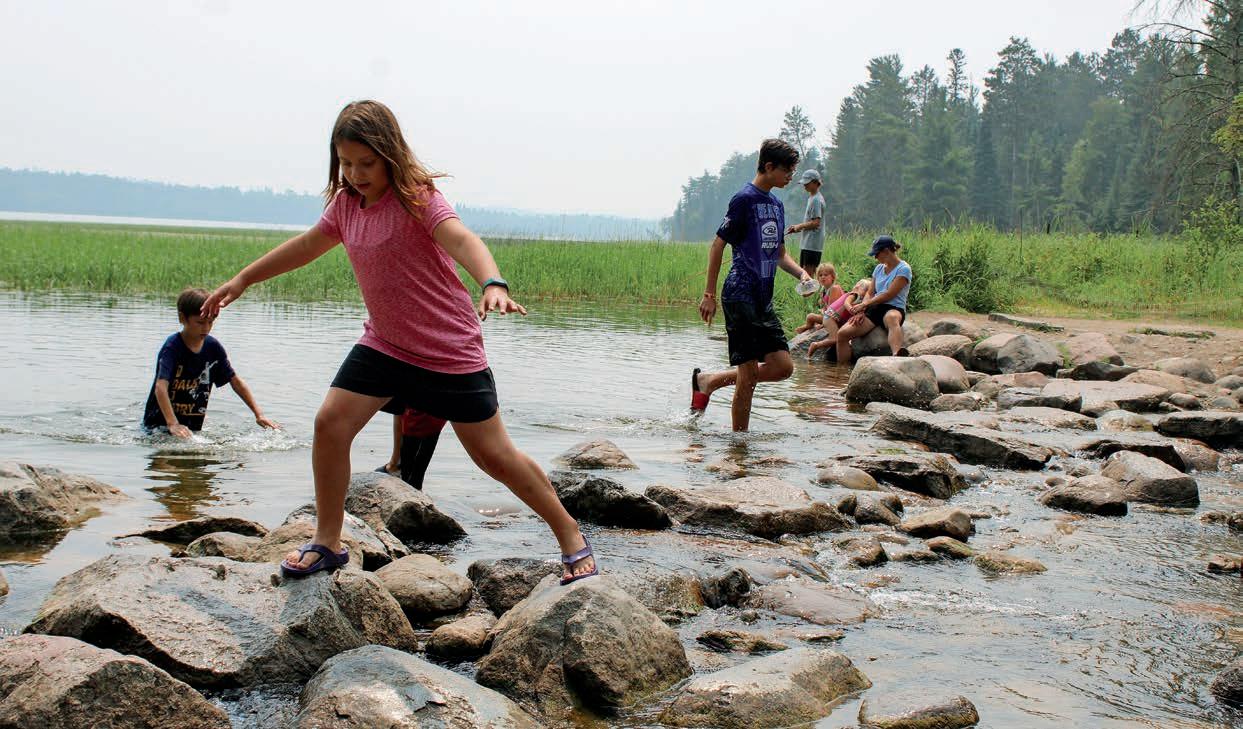
Itasca State Park naturalist
As summer begins to wind down, there is still plenty to do at Itasca State Park in August, September and beyond.
1. Star gazing: With days getting
shorter, drink in the night sky. The Milky Way is amazing to see and visible earlier in the evening.
2. Challenge your birding skills. Migrating birds, especially warblers, are less colorful as they molt worn feathers. Fall birding means learning to identify birds by other features, such as patterns like eye rings.
3. Lace up your boots: Fewer biting bugs and cooler temperature means fall is a great time for long hikes.

park. Other outdoor activities include taking an excursion boat on Lake Itasca, exploring along Wilderness Drive, biking or hiking along more than 30 miles of designated trails, fishing in one of the many lakes, observing the wild flowers in season as well as birding. Like the entire Park Rapids area, wildlife can be seen throughout the park.
For more information about the park events and schedules, call Itasca State Park headquarters at 218-699-7251, email itasca.statepark@state.mn.us or go to www.dnr.state.mn.us/state_ parks/itasca/index.html.
4. Enjoy a campfire: Cooler evenings and earlier sunsets means more time to be mesmerized by campfire flames and more time to enjoy s’mores!
5. Bait that hook: Changes in water temperature means fishing will start to pick up. The fall equinox also triggers fish to eat more, packing on weight for winter.

6. Wildlife watching: Early evening and twilight is a nice time to watch for signs of beaver activity as they begin to cut more shrubs and trees for winter food supplies.

7. Photograph mushrooms: Bring a camera and photograph some of the amazing and colorful mushrooms that appear when autumn rainfalls stimulate fungal threads to send up fruiting bodies such as mushrooms, toadstools and shelf fungus.
8. Get your wheels in motion: Biking in late summer and fall is a nice way to see the start of autumn changes and the weather can be a lot cooler.

9. Get on the water: Decreasing light levels in late August and September trigger fall color changes. Enjoy the reflection of autumn leaves on the water’s surface.
10. Fall leaf watching: Enjoy the yellows, oranges, reds and purples as the green leaves of summer fade and fall colors appear. A warm, moist summer leading into sunny, cool fall days with less daylight means fall colors will start to appear. Just like a recipe needs to be measured, if the weather is too warm, too cold, too wet or too dry it can affect when leaves drop or even if the colors will change before the leaf falls from a tree.


As summer turns into fall, the northwoods region shows nature at its most magnificent. The Heartland Lakes area includes several routes for a leisurely drive to watch the changing colors.
The Lake Country Scenic Byway is a stretch of State Hwy. 34 from Detroit Lakes to Walker. The 88-mile route includes a spur on U.S. Hwy. 71 north to Itasca State Park.
Traveling east, hardwoods give way to conifers near Snellman, with birches and aspens showing their fall colors first. At the right time of the season, visitors will see warm yellows, oranges and reds mixed with tall evergreen spires.

Detroit Lakes promotes a Fall Color Tour whose northern route travels through Park Rapids and up to Itasca State Park before looping back.
Another “Fall in the Prairie” route loops through the Tamarac National Wildlife Refuge, passing by blue lakes cruised by trumpeter swans.
David Schotzko with DNR Parks and Trails in Bemidji recommends taking a scenic drive through either the Paul Bunyan or Two Inlets State Forest.
The forest roads there are “narrow and winding,” he said, “and very, very colorful, when the colors start turning.”
While trucks or Jeeps may be needed for the minimum-maintenance roads, Schotzko said the system forest roads can be traveled by any highway-licensed vehicle.
There are also non-car routes for taking in the scenery, such as the Round River ATV Trail and the Martineau Motorcycle Trail in the Paul Bunyan State Forest, the Forest Riders ATV Trail in the Two Inlets State Forest, an equestrian trail in the Huntersville State Forest and canoeing the Crow Wing River State Water Trail, starting on 11th Crow Wing Lake in Akeley.
For sheer beauty, there’s the Thorpe Tower overlook, north of Nevis. “You can see forever,” Schotzko said.
Meanwhile, the Smoky Hills State Forest has drivable trails showing ridges and swales vibrant with maple and pine.
At Itasca State Park, interpretive naturalist Connie Cox said the time to start seeing fall colors is mid- to late August, close to the ground with bracken ferns turning camel-tan and red maples starting to change color early.
Scenic routes through the park include a 16-mile loop, including Wilderness Drive and Main Park Drive, that can take 40 minutes to an hour to travel. Cox also suggested climbing to Aiton Heights Fire Tower for a panoramic view.
Moving into September, Cox said, basswoods turn a soft lemon yellow, red maples bright red, sugar maples yellow-orange and ironwoods add yellow hues to the forested hills, while in the wetlands and along the ponds and lakes, ash trees turn a lovely shade of yellow.
Later waves of color
For those sticking around later in the fall, Cox said, a second wave of color begins from late September into early October.
“We’ll start seeing the paper birches turning a rich, deep, gold color,” she said. “You might start seeing some of the aspens changing, with the trembling aspens throwing in a few hints of yellow. Bigtooth aspens have kind of an orangish yellow.”
The third color stage features the tamaracks in late October, Cox said, while the beauties of fall go far beyond the trees.
“The beautiful asters will be purple,” she said. “You’ll have the lovely goldenrods with their bright yellow flowers. You’ll see the wild rice ripening in late August on Lake Itasca, and with that, you can also enjoy the waterfowl that are moving through” – such as blue-winged teal, wood ducks, mallards and Canada geese, paying in their migration to feed on the wild rice.

Campfires are a summer tradition in the northwoods. Gathering around a crackling campfire and listening to the loons calling from the lake is a peaceful way to end the day. Whether cooking hotdogs, roasting marshmallows or taking the chill off the night air, these tips will help you build a campfire that burns well and extinguish it safely when you are done.
Building a safe campfire
There are a few important things to consider before building a fire.
If wilderness camping, pick a spot at least 10 feet from tents and away from brush and grass. This will keep smoke away from the sleeping area. Also pick a location that is sheltered from the force of the wind so the fire will not be blown out.

Be sure young children are actively supervised so they do not get too close to the fire. They should also practice the move “stop, drop and roll” used to extinguish clothing that catches fire.
The DNR suggests these steps to build a safe campfire:
► Clear the campfire site down to bare soil and remove any combustible materials (leaves, sticks, etc.) within five feet of the fire.
► Build a small fire and contain it within a fire ring three feet or less in diameter.
► If no fire ring is available, scoop out a depression in the center of the cleared area and arrange a ring of rocks around it.

► Have a bucket of water and a shovel near the campfire in case the fire spreads.


These are a few of the most popular styles.
► The Teepee

This is the most common type of campfire. It is made by a creating a base of kindling (newspaper, bark, or dry brush) and then leaning logs onto each other over it. The fire is started at the bottom, and as the kindling burns it ignites the logs. Eventually the teepee will collapse as the logs burn and fall into the middle of the fire. More logs may be added as needed. The teepee fire produces a lot of heat and light, but is
fast-burning, so be sure to have a good supply of wood on hand a safe distance from the fire to add as the fire burns down.
► The Log Cabin

This type of fire may also be referred to as the criss-cross or self-feeding fire. A log cabin format consists of logs stacked in alternating layers like the frame of a log cabin. Larger logs are stacked in a criss-cross fashion at the bottom level, then medium sized-wood, then small wood. Put some twigs and brush on the top for kindling and start the fire from the top down. As the fire burns on top, it will spread down to the next layer, making this a self-feeding fire. The Log Cabin fire is exceptional for cooking since it produces a steady heat and burns for a long time.
► The Swedish Torch
This type of fire is ideal for cooking or boiling water with a limited supply of wood. Take a large log and slice it in an “x”
shape to create just enough air flow to allow a fire to burn in the center. Shortly after starting the fire, set a pot or kettle on top of the log base. Remove the pot or kettle before the log burns and collapses.
When leaving the campsite, make sure the fire is completely out. TakeMeCamping.org states that the best way to extinguish the fire is to first use a bucket to spread water over the fire to extinguish the flames. Next, use a stick to stir the fire bed and then pour more water over the area.
Repeat as needed until there is no more “hissing” sound coming from the fire when water is poured over it. Cover the area with dirt. This assures embers are all extinguished and cannot re-ignite.
Stay in the area for at least 30 minutes to make sure the fire does not start up again.

material, favoring wild rice and sago pondweed.
Wood duck
Size: About 20 inches, 1-1/2 pounds
Colorful wood ducks nest in hollow trees throughout Minnesota, near wooded river bottoms and potholes, flooded hardwood forests and lakes where nuts, berries, weed seeds, insects, and plants are available. Their willingness to use man-made nest boxes has helped bring wood ducks back from the brink of extinction.
Identification: Broad wings and a long square tail. Drakes have a blue-green crested head with white stripes, reddishbrown breast, buff sides and red eyes. Hens are brown with white speckled breast, crested head, and white eye ring.
Sounds: The hen’s “wee-e-e-e-k, wee-e-e-e-k” whistle is commonly heard.


Fun facts: Wood ducks, also called woodies, have a strong grip and can perch on branches.


Size: About 24 inches, 2-1/2 to 3 pounds
Popular with both hunters and birdwatchers, the wide-ranging mallard is often seen in rural and urban wetlands, ponds, and lakes throughout Minnesota. They eat sedge seeds, grasses, knotweed, aquatic plants and insects, corn, grains, snails and wild rice.
Identification: A large paddle duck with a blue patch on the wing. Drakes have a distinctive glossy green head and white neck collar. Hens are mostly brown. Both sexes look like females in the summer.
Sounds: Hens use a loud, long series of quacks. Drakes have a low-pitched “wheat” call.
Fun facts: Mallards swim with their tail held above the water, so they can spring directly into the air when threatened.
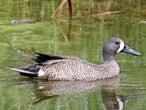
Size: About 15 inches, one pound
This fast-flying paddle duck travels in flocks and breeds in prairie areas during the spring. Sensitive to cold, they migrate south sooner than most ducks in Minnesota. They like to eat aquatic insects, weed seeds and plants.
Identification: A very small duck with a small black bill. Drakes have a white facial crescent, chestnut spots on the breast, and pale blue wing patches. Hens are gray-brown with pale blue wing patches.
Sounds: A faint “tsee-tsee” call and a high-pitched quack.
Fun facts: Cinnamon teal look nearly identical to their blue-winged cousins until spring, when both species grow their distinctive breeding plumage.
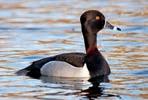
Size: About 16 inches, 1-3/4 pounds
Ring-necked ducks breed mostly in Minnesota’s northwestern counties, preferring small bodies of water such as wooded potholes. They eat only plant

Identification: A small diving duck with bright yellow eyes, dark body and wings, a brown neck ring and a white ring on the front of its bill. Drakes are mostly black. Hens are dark brown.
Sounds: Hens have a high-pitched purr.
Fun facts: The ring-necked duck is also known as a ringbill.
Size: About 14 inches and 13 ounces
The bufflehead is a beautiful little duck that nests in abandoned flicker holes in aspen parkland from extreme northwestern Minnesota to Saskatchewan. They forage underwater for insects, plants, crustaceans, mollusks and fish eggs.
Identification: This species has a distinctive head shape caused by a puff of feathers. Drakes have white chest and flanks, iridescent green and purple face and a large white patch on the head. Hens are brownish with a white patch on the cheek.
Sounds: Drakes have a grating or chattering mating call and may squeal or growl. Hens have a guttural “cuk-cuk-cuk” and summon their ducklings with a low, throaty note.
Fun facts: Also known as a spirit duck, the bufflehead is very monogamous and migrates punctually. Gathering in small groups, one duck acts as a sentry while others dive for food.
Size: About 17 inches, 1-3/4 pounds
This fast flier can be found near larger bodies of water, where they sometimes sit in flocks of more than 10,000. They eat aquatic insects, wild rice and other vegetation and nest in grassy fields or on floating mats of vegetation. They are found primarily in northern Minnesota.
Identification: A bulb-shaped, medium-sized diving duck. Drakes have dark purple heads, white sides and yellow eyes. Hens have dark brown backs, brown sides, white bellies and a white ring around their bills.
Sounds: Hens have a high-pitched purr.
Fun facts: Historically, tens of thousands of lesser and greater scaup have migrated through the Lake of the Woods Pine & Curry Island Important Bird Area, though their population has fallen in recent years.

Size: About 21 inches, 2-1/2 pounds
This fast-flying diving duck sometimes gathers in large numbers on northcentral Minnesota lakes. They nest in early May and eat sago pondweed, wild celery tubers, wild rice and aquatic insects.
Identification: This large duck has a sloping bill. Drakes have red eyes, cinnamon-colored heads and brilliant white backs. Females have tan heads, dark brown breasts and cream sides and bellies.

Sounds: Hens have a deep staccato purring, and drakes have a “whoo” call.
Fun facts: Canvasbacks build floating nests out of cattails or bulrushes.


During mid-August and September darkness comes earlier and cool night air is a reminder of autumn’s approach. Minnesota is known for its hot dishes. Try one of these recipes submitted by Heartland Lakes area cooks to serve up as a cozy supper.
From the kitchen of Nancy Minkel
4 servings
4 to 6 brats
2 potatoes, cut into 1-inch chunks
2 apples, (I like Granny Smith or Macintosh), sliced
1 sweet onion, sliced
1 cup sauerkraut, drained
2 Tbsp. apple juice or water
2 tsp. caraway seeds


Slice the brats into “coins” about 1/2 inch thick. Boil and drain. Preheat the oven to 350 degrees. Grease a 2-quart casserole dish. Toss all ingredients together and place in the casserole dish. Sprinkle with caraway seeds. Cover and bake for 1 hour. Remove lid and bake another 30 min.


From the kitchen of Jean Hendrickson
3 lbs. frozen homemade meatballs
homemade or a 2 to 3lb. bag of frozen meatballs
26-oz. jar spaghetti sauce
1 cup mozzarella cheese, shredded
1 cup Italian blend cheese, shredded
1/2 cup Parmesan cheese, shredded
1 loaf fresh Italian bread, cut into slices
Garlic Butter:
1/2 stick butter room temp
1 Tbsp. minced garlic
1 tsp. Italian seasoning
Preheat the oven to 375 degrees. Prepare the garlic butter by mixing the garlic, Italian seasoning, 2 tablespoons of the Parmesan cheese and butter together and spreading them on the bread slices on 1 side only.
Arrange the bread on the bottom of the dish and up on the edges of a 9-by-13-inch baking dish. Sprinkle half of the cheese on the bread and place in the oven for about 10 minutes to melt the cheese.
In a saucepan, heat the meatballs and sauce until warmed throughout, then pour the meatballs/sauce over the bread in the middle of the baking dish. The
side bread should be standing up so it’ll get crispy.

Add the remaining cheese and additional spices if desired. Place in the oven and bake for approximately 20 minutes at 375 degrees or until the cheese is melted and bubbly.
From the kitchen of Mary Niklaus
1 large onion diced
1 large russet potato, peeled and diced

3 skinless boneless chicken breasts, diced
1 can (10.5 oz.) cream of celery soup
1 can (10.5 oz.) cream of chicken soup
1 cup low sodium chicken broth
1 Tbsp. fresh parsley
1/2 tsp. poultry seasoning
Black pepper to taste
3 cups frozen mixed vegetables, defrosted
8 baked biscuits, homemade or refrigerated
Add onion, potato, and chicken to a 4-quart slow cooker. In a small bowl, combine cream of celery soup, cream of chicken soup, broth and seasonings. Stir into chicken mixture and cook on high for 4 hours or low 7 hours. Add mixed vegetables and cook for 1 hour more. Meanwhile, bake biscuits as directed in the recipe or on the refrigerated biscuit container.
Stir pot pie mixture, spoon into bowls and top with biscuits.
Readers are invited to submit their favorite recipes to enjoy, along with a note about what makes them special. Send recipes to lskarpness@parkrapidsenterprise.com
“Happiness is not something you postpone for the future; it is something you design for the present.”
- JIM ROHN
Regional artists invite the public to the 2023 Art Leap driving tour. Visit studios and other cultural sites in this free event sponsored by Heartland Arts, an umbrella organization for 16 arts and cultural organizations in the greater Park Rapids area.

Several loops lead visitors through fall’s scenic beauty in any direction.
This year’s open studio tour is from 10 a.m. to 5 p.m. on Saturday, Sept. 23 and from 11 a.m. to 5 p.m. on Sunday, Sept. 24.
Meet artists and learn about their creative process at 30 sites in Hubbard and Becker counties.

2023 Art Leap will introduce guests to nearly 100 artists skilled in a variety of expressions: sculptures, paintings, mixed media, pottery, photography, mosaics, wood and metal work, fiber and paper arts, jewelry, beading and other Native American work.
“The Upper MIssissippians” will kick
off Art Leap with a dance at the Armory Arts & Events Center (AAEC) on Friday, Sept. 22. The full band will perform an evening of swing from the 1920 to 1950s. Learn more at heartlandarts.org.
New this year, the AAEC hosts a pop-up exhibition organized by the Animikii Print Club, a collective of indigenous artists based in Mahnomen. Grants helped the Hubbard County Developmental Achievement Center (DAC) develop a fine arts program to support artists with disabilities and pervasive mental illness. Their work will be displayed for Art Leap at the Hubbard County DAC Fine Art Studio, Park Rapids’ first makers space. Also new this year is Bam’idizowigamig Creator’s Place. Indigenous artists of the Pine Point area create traditional Ojibwe art here year round. Village of Pine Point murals,
designed by Terri LaDuke and Annie Humphrey and painted by volunteers and Pine Point youth, can be seen on a short drive in the neighborhood north of PowWow Highway.
Doreen Schik will demonstrate the fused glass process at Spirit Lake Gift Shop in Menahga. Visitors will also find laser-engraved woodworking, fiber arts and vessels.
Event guides are available at the Park Rapids Lakes Area Chamber of Commerce Visitor Center, Park Rapids Area Library and other locations. The guide is also available to view and for download at www.heartlandarts.org.
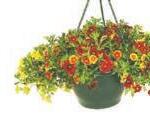




Forestedge Winery, renowned for transforming native Northwoods’ fruits and berries into internationally award-winning wines, hosts its annual art fair on the third weekend of August.

This year’s dates are Saturday, Aug. 19 and Sunday, Aug. 20.

Admission and parking is free. The event features selected artists exhibiting and selling their works. Artistic mediums include pottery, porcelain, jewelry, fiber, leather, wood, painting and more.



Stroll the exhibits and sample wine, which will be sold by the glass, with bottles and cases available for purchase. Area restaurants add unique cuisine and jazz musicians set the tone for the unique summertime event.

Saturday’s hours are 10 a.m. to 5:30 p.m. and Sunday’s 10 a.m. to 4:30 p.m. For more information, contact the winery at 218-224-353 or visit www.forestedgewinery.com. It is located 14 miles north of Akeley on Hwy. 64.




We believehumankindnessisatthe root ofallhealing.Itmeans beingthereforour communitythroughthickandthin. Ever ystep we takeis towardbetterhealth foryou.Servicesoffered:
We believe humankindness is at the root of all healing. It means being there for our community through thick and thin. Every step we take is toward better health for you. Services offered:

•24/7Emergenc y&Level 4Trauma Center
•Physicaland CardiacRehabilitation
•Orthopedics &SportsMedicine
•WeightManagement Center
•Robotics
•HospiceCare

•R adiology
•CommunityHealth
•CommunityDentalClinic